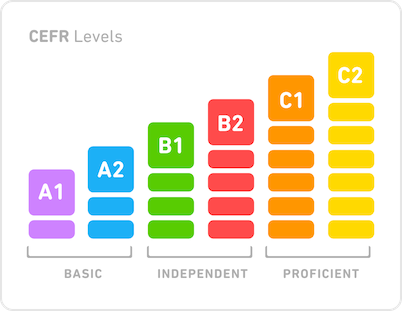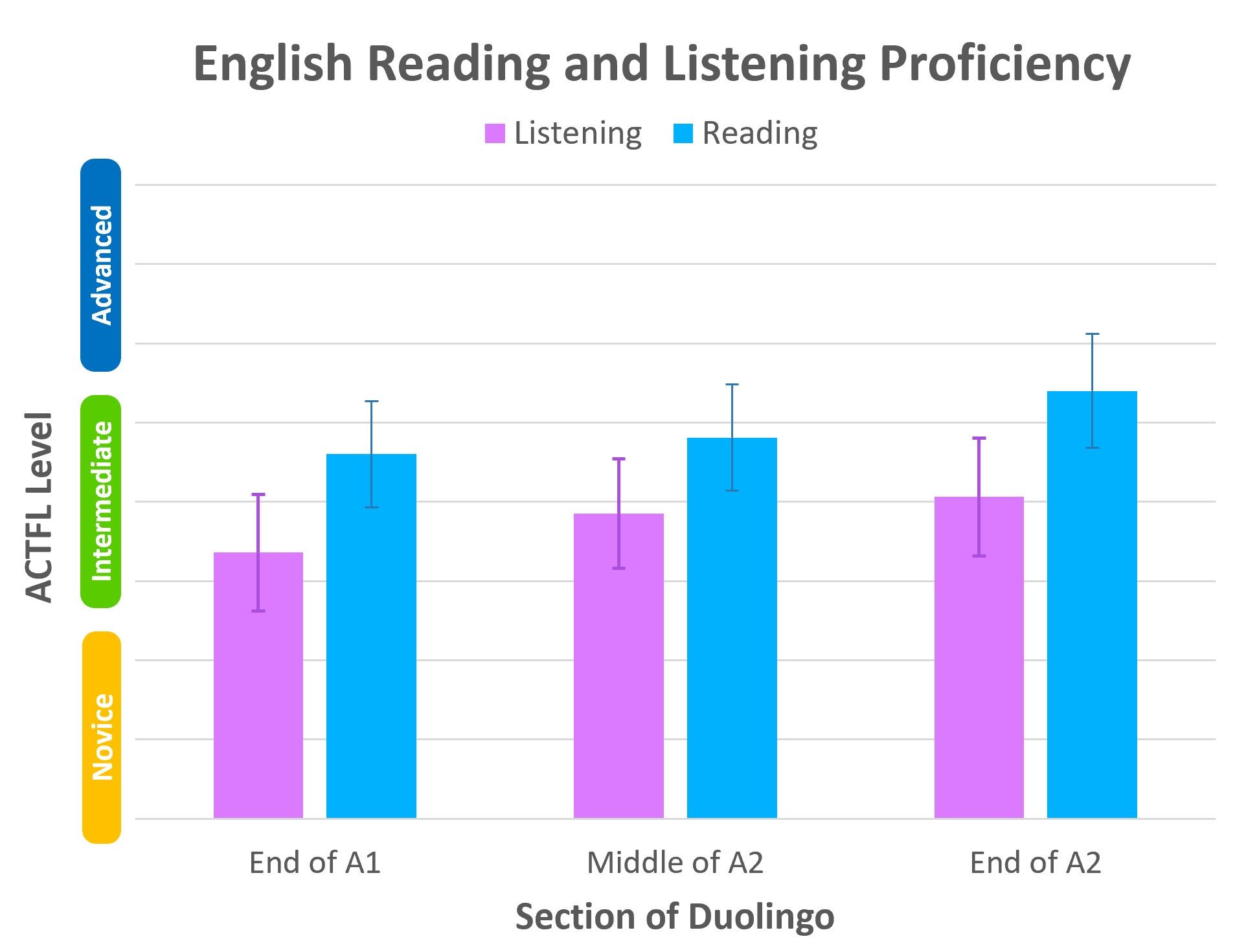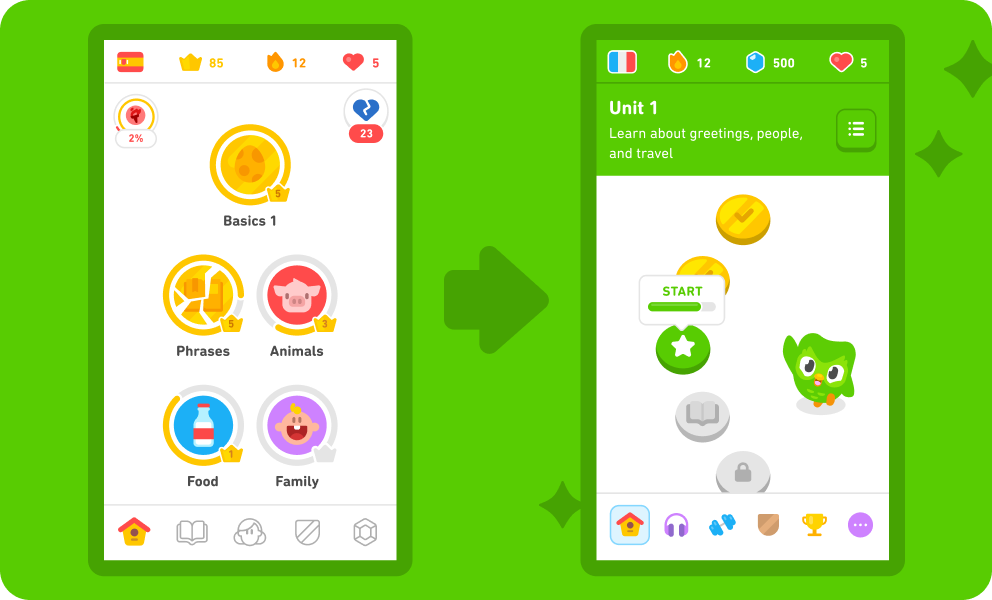By now you have probably heard that Duolingo’s Spanish and French courses are effective in developing learners’ reading, listening, and speaking skills. We’re excited to share new results about learners in our English course!
The goal of this study was to understand how well Duolingo is teaching reading and listening skills to English learners. The results show that completing the beginning sections of the course led to intermediate-level reading and listening proficiency! Learner scores also improved steadily from one section to the next.
Read on for more information about how we conducted the study and what the findings tell us about learning English with Duolingo.
Measuring reading and listening skills
This study investigated learners in Duolingo's English course for Spanish speakers. This course is aligned with the Common European Framework of Reference for Languages (CEFR), an international language proficiency standard that defines learning goals for Basic (levels A1 and A2), Independent (B1 and B2), and Proficient (C1 and C2) users. For this study, we tested learners in the A1 and A2 sections of the course. Learners at the A2 level can understand sentences and common expressions and can use the present, past, and future tenses to talk about work and professional life, travel and leisure activities, opinions, needs, and more.

In order to focus on how much people can learn with Duolingo alone, the study only included learners who were not taking English classes or using other programs while studying with Duolingo. We also selected learners who said they knew no or very little English before they started Duolingo, so that we were sure that anything they learned was from our lessons. Using these criteria, we included a total of 263 learners from the end of the A1 section to the end of A2 and tested their reading and listening skills with a third-party language assessment, which gave us an objective view of learners’ language proficiency.
How much English did people learn?
For learners who are using only Duolingo to study English, how well can they read and listen in their new language? Our results showed that learners reached intermediate-level reading and listening at the completion of the A2 content. According to a commonly used U.S. proficiency scale (ACTFL), on average learners scored Intermediate High in reading and Intermediate Mid in listening. It's pretty common for learners to have higher proficiency in reading than listening, since reading usually doesn't have the same time pressures as listening.
Did scores increase throughout the course sections?
Now we knew that Duolingo learners who have completed the A2 content had strong reading and listening scores for their level; next, we wanted to see how that learning happens across sections. Are learners making steady progress, and are they continuing to learn throughout the course?
To answer these questions, we analyzed the scores of learners at different points in the beginning sections, A1 and A2 sections. Scores at the end of A2 were significantly higher than those at the end of A1 in both reading and listening! This progress, especially in the last half of the A2, shows the effectiveness of Duolingo's Basic-level content: The more lessons learners complete, the more they learn!

What does this mean for the new course structure?
Recently, we redesigned our home screen to build practice and spaced repetition right into the learning path. Will Duolingo learners who study in the new design show the same learning outcomes as the ones in our study?
We think so!
In the original home screen, each section of the course was organized into a series of skills (those colorful circles), each skill had five levels of lessons, and the sections concluded with a "checkpoint." In the redesign, those levels are spread out in a specific sequence to help learners practice material in a way that maximizes learning and remembering it all.

Because Duolingo’s course content is aligned to CEFR and the number of skills is the same across the two versions, we believe that the findings are applicable to the new course structure. Previously, although each skill offered five levels, learners were only required to complete the first level. As a matter of fact, many learners rarely “leveled up,” and instead completed only the required level! Duolingo's new path structure condenses each skill into three levels and puts each level directly in the learner's study path, together with practice skills and our reading feature, Stories. As a result, learners end up studying and reviewing more content in the new path, which leads us to believe that they will learn at least as much, if not more.
Our learners are making great progress!
We're excited about the progress beginning English learners make on Duolingo! You can read the full research report here. Next, we will evaluate how well we're teaching speaking and writing skills, and soon we'll be researching learners at higher levels, too. Check back soon to see the newest ways we're using technology to teach effectively!



